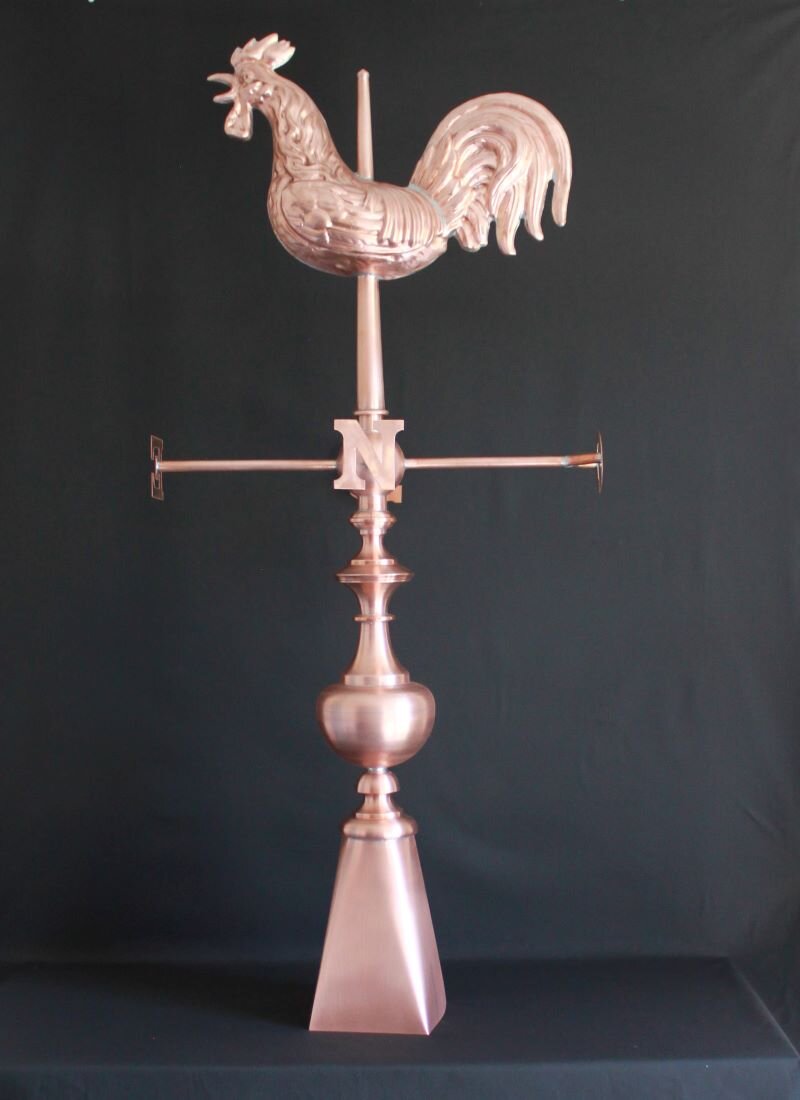The weathervane, decorative and practical object of the garden, but how to choose it ?
The Weathervane
The weathervane is the oldest known weather instrument for indicating wind direction. It has adorned the roofs of our houses and churches for centuries and, despite everything, it is still very popular today. The weathervane has evolved in terms of shapes and colors to become a decorative object, in our homes and gardens.
The first function of the weathervane is to show the wind’s direction. It is one of the oldest meteorological instruments. The weathervane consists of an arrow, mounted on an axis, which turns according to the direction of the wind. As the wind blows, it pushes on the back of the arrow (the largest part of the weathervane) which, as a result, is aligned parallel to the wind direction.
The arrow on the weathervane indicates the direction from which the wind is coming. The cardinal points are indicated on most weathervanes, using the letters N for North, S for South, E for East and W for West. These indications make it easier to find your way around and to know at a glance where the wind is blowing from.
Generally, a weathervane is made of iron, copper or zinc and takes the form of a man, woman or animal. It is important to know that in the past, these shapes usually indicated the occupation of the inhabitants of the house where the weathervane was installed. Present on many church towers, the weathervane represents a silhouette of a rooster, a Christian and French symbol at the same time.
A useful weathervane or a decorative object?
Even if, with the new technologies, there are nowadays many efficient tools to measure the climatic hazards, including the wind, the weathervane is still a great success. It has many advantage, in addition to giving information on the origin of the wind, its aesthetic and quality are appreciated by many owners. Indeed, as a decorative object, the weathervane contributes to give cachet and character to a house. Many craftsmen specialize in the creation of original weathervanes, that are true works of art, and can respond to the desires of their customers in terms of themes (aviation, marine, professions, region, sport, etc.).
If you want to use your weathervane for its primary function, i.e. to know the direction of the wind, it is advisable to install it at a height of at least ten meters from the ground. It can for example be placed on the roof of a house, on top of a mast or even on the front of a house.
For its decorative side, a weathervane can be installed high up but also planted in the garden on a base along which you can grow a climbing plant. It can also be installed on the gable of a wall as an exterior decoration. The weathervane is often associated with a small wind turbine, which is just as decorative in the garden or on the roof of a house.
The weathervane has also become a design object in the garden. There are now colored models (orange, pink, blue, etc.) that are particularly well adapted to contemporary style homes.
You are bound to find the weathervane that matches your decor and your taste among the many models of shapes, materials or colors available on the market, far from the classic gray or black iron weathervanes that we most often have in mind.

